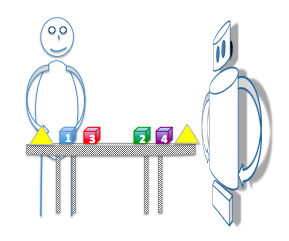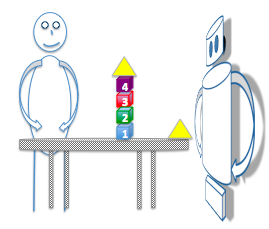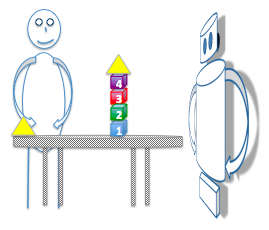|
|
|
Call for papersAimThe aim of this workshop is to allow researchers interested in joint action, roboticists but also philosophers and psychologists, to have a context for discussion about and progressive elaboration of a framework for human-robot joint action. To achieve this goal, we propose to the community to tackle a common example (as it is sometimes done in robotics planning competition) with the goal to identify the capacities and skills needed for the successful performance of the joint action and to see which of these are present are present or missing in any of our architectures. This should enable us to build upon each other's experience to further develop ongoing work. We hope that this could be a first meeting in a series of workshop in the next years. TopicsWe are seeking to frame joint action, interesting topics include:
An illustrative examplePlease feel free to play with this example since discussion is really welcome. However, it would be very useful if you clearly indicate in what way your work is helpful to deal with such an example, i.e. which "brick" your work could contribute to the framework. A human and a robot have the goal to build a pile with 4 cubes and put a triangle at the top. One after the other, they should stack bricks in the expected order.Each agent has a number of cubes accessible in front of him and would participate to the task by placing its cubes on the pile. At the end, one of the agent should place a triangle at the top of the pile. The initial state is the following: Actions available for each agent are the following (with object = cube or triangle):
Each agent is able to infer the state of the world so it knows:
Moreover, we assume each agent is able to observe the activity of the other. The expected final state could be one of the following:
Possible deviations could be that:
Moreover, during the execution of the task, a number of behaviors can arise, among all:
Finally, a negotiation phase should arise at the end to decide who put the triangle on the pile. TopicsWe are seeking to frame joint action, interesting topics include:
Application formatWe are seeking several kinds of contribution, so you can whether:
We invite submission of short papers (max 4 pages) but any other form of submission is welcome in this first phase, too, since we are interested in any contributions that could stimulate a fruitful debate. Visit the submission page to leave your submission. All papers will be reviewed by our program committee. |





